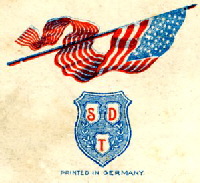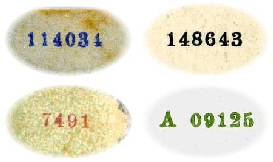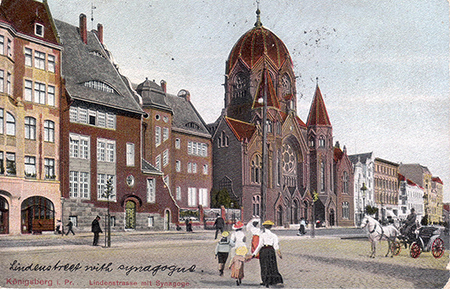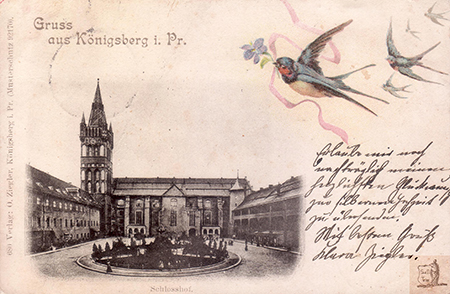Shaar & Dathe company
The company Schaar & Dathe from the ancient city of Trier on the Mosel River was one of the largest publishing firms in Germany during the postcard boom. In its work, Schaar & Dathe used three basic printing methods : letterpress, lithography and collotype, as well as a combination of these.
Many of the postcards from this publisher bear the initials S. & DT , with or without an image of a Roman in a toga next to a shield. Quite often, however, the postcards bear nothing more than a 5-digit numeric code. But even in these cases, some characteristic design details can help in identifying the postcard, although, admittedly, this is not an easy task.

History of the company Shaar and Date
The company was founded in August 1895 by Schaar and Hermann Date. As often happens, one of the partners, namely Schaar, left the company during its development. The company's printing activities in 1898 only include letterpress printing. No postal address is given, but the company was in fact located in Trier at Nordallee 43 all along.Schaar and Dathe entered the postcard market using mostly the phototype printing process. By 1900, the company (one of several in Germany) offered its customers a complete postcard printing cycle in less than 20 working days. The work used the then popular "autochrome" process.
Italy became the company's first foreign market. In 1903, the publishing house opened a branch in Milan, although it had had its own representative in Naples as early as 1900. In 1904, rather unexpectedly, the company changed its form of ownership and became a limited partnership (K.-G. a. A.). In 1923, the company was again transformed into a joint-stock company. Throughout this time, it was managed by Hermann Date. Before the First World War, the company owned 15 large printing presses (five for each of the three processes: letterpress, lithography and collotype), and a lot of auxiliary equipment. The staff numbered about 150 employees.
Even after the end of the war, Schaar & Dathe continued to operate in the printing market. In the early 1930s, the company had 4 large/7 small letterpresses, 3 large/2 small lithographic presses, 1 offset press and 3 phototype presses with a staff of 85 people. In 1933, the company was renamed Schaar & Dathe, Ernst Klein AG. It was now managed by Hermann Dathe and G.A. Klein. The number of presses increased, although the staff remained the same. The company opened a branch in Barmen (Wuppertal) at Karlstrasse 6 (apparently this was the Kleins' business). The merger was not successful, and in 1934 the company was liquidated. Its legal successor was Fritz Hagen, who had several presses and 30 employees. The production was now located at Adolf-Hitlerstrasse 8 in Trier.
In 1939, the company was located at the same address, but was already called H. Dackweiler & Co., formerly Schaar & Dathe. There is unconfirmed information that after 1945, Klein again became the legal successor of the company.
Identification of Shaar and Date Postcards

A number of cards printed and published by Shaar & Date contain either the full company name or an abbreviation, with or without the logo. Most cards, however, can only be identified by a 5-digit (rarely 4-digit) numeric code located under (and sometimes inside) the picture on the front. Later, the code was moved to the back in the lower right corner. Some halftone and color cards contained the prefix "A". Sometimes the cards contained the inscription "Printed in Treves". There are at least three inscriptions in different languages: "in Treves" in English, "à Trèves" on French cards and "Trevisi" in Italian. Trier is the oldest German city. In 15 BC, the Romans founded a settlement called Augusta Treverorum, which was renamed Treveris under the Emperor Augustus.
Schaar and Date printed postcards of various cities in East Prussia . In particular, there are very good quality views of various corners of Königsberg, made in the early 1900s using the color phototype method.

On the back of these postcards, in the center from top to bottom, is the inscription "Kunst. u. Verlagsanstalt. Schaar u. Dathe. Komm. Ges. a. Akt. Trier", which allows us to date these postcards as having been issued before 1904.
![]()
"Shaar and Date" carried out printing orders for Königsberg postcard dealers. Below is an example of such an order for Otto Ziegler from Königsberg.

